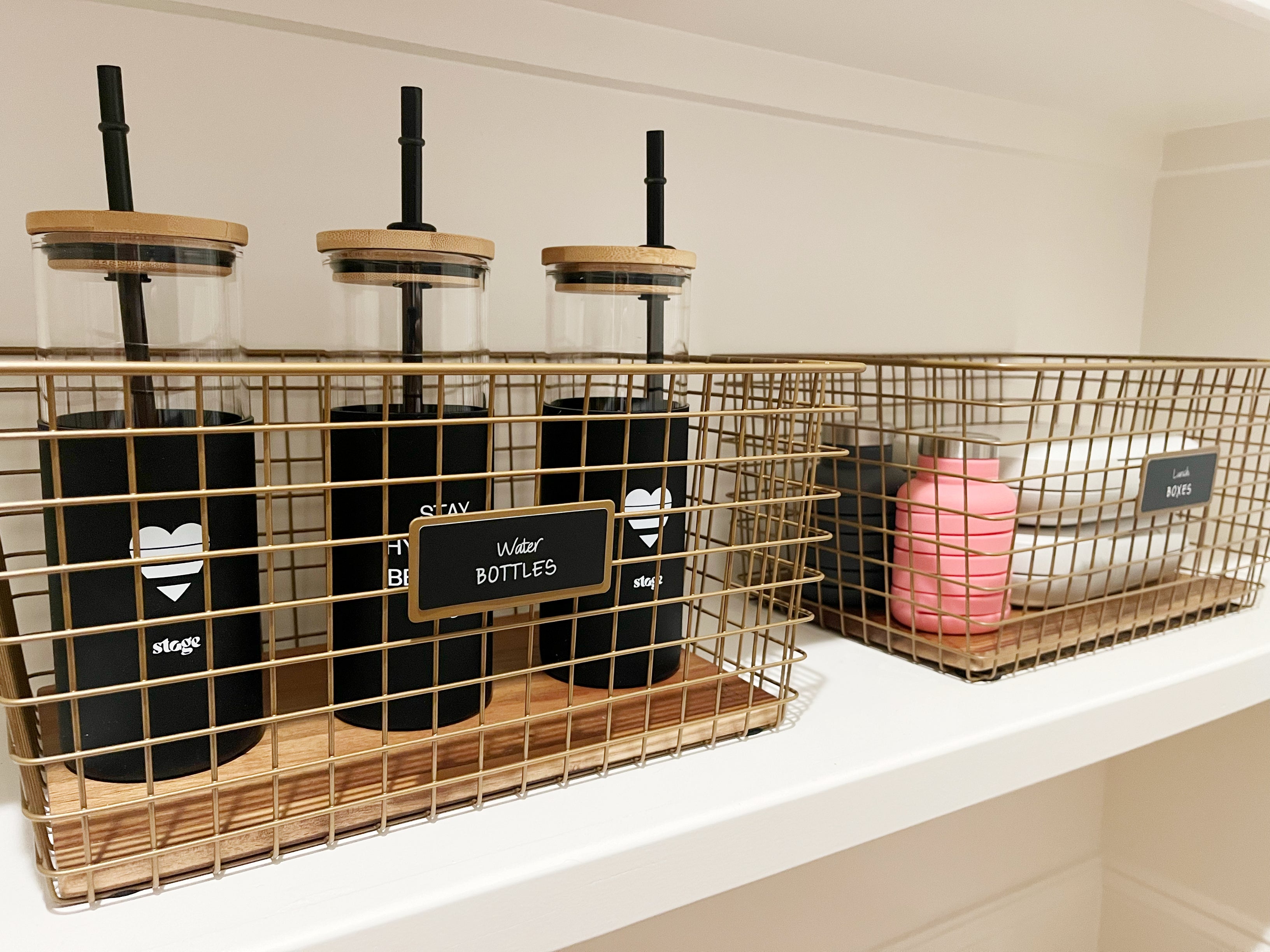As with any major event in life, a little preparation goes a long way. If you’re like us, we found calm in getting our space ready for us to be out of commission in the weeks following our surgeries, chemotherapy, and in the later sessions of radiation.
There’s something very comforting to us about a well-organized drawer or closet, where everything has its place. You’ll also find that during the recovery process you’ll have your go-to clothing and kitchen items.
With that in mind, we teamed up with the home organization experts at NEAT Method, to bring you some tips for optimizing your space for recovery. We hope this helps you feel more prepared and takes a little of the stress out of the recovery process for you and your caregivers!
Now for the tips….
For Surgery
If you’re preparing for a double mastectomy, you should anticipate your mobility (and ability to care for yourself) to be limited in the weeks following your surgery.
Here are our top three need-to-know nuggets of information and some suggestions for optimizing your space in advance of your surgery for a smooth post-op recovery.
- You won’t be able to lift your arms over your head for 6 weeks. This means cabinets and shelves will be hard to reach. You need to be careful not to reach or stretch your pectoral muscles too soon as it could compromise your reconstruction and/or healing — we know, we learned the hard way.
- You won’t be able to lift more than 5 lbs. for 4-6 weeks. So lightweight drinkware, plating, and silverware are helpful.
- Doors will be difficult to open. Yes, even most refrigerator doors. Some things obviously have to be refrigerated, but move non-perishable items to easily accessible pantry areas or countertops, to minimize strain.
NEAT Method Kitchen & Pantry Tips
Lower those dishes.
Move lightweight plates and drinkware to a drawer at or below waist level, so they’re easy to reach. Use drawer dividers to separate dishes, cups and napkins. This will prevent items from shifting and ensure you won’t have to rummage through the contents. If your kitchen lacks drawer space, a basket or bin within a lower cupboard works similarly.
Relocate snacks.
Set up snacks and non-perishable items on the countertop and/or in the pantry for easy access for you, as well as kids. Give snacks a designated home within a drawer or basket and make sure it’s labeled so everyone knows where to find them — and where to put them after grocery shopping.
Corral lunch items.
Make it simple for kids or other caregivers to pack lunches. The easier you can make it for your children to self serve, the better. Utilize baskets and labels to mark each category for a foolproof system that anyone can follow.
Toss expired food.
Get rid of anything expired in your refrigerator prior to surgery and go shopping to replace essentials. Again, adding labels will make it easy for anyone to locate what they need, so consider adding label tape to refrigerator drawers and shelves.
Repurpose your junk drawer.
While the “junk drawer” (or what we like to call the utility drawer) is essential, now is a great time to repurpose it for more important recovery items. It’s a perfect home for drain output records, medication schedule, pills, etc. An expandable drawer insert is a simple way to keep everything organized, divided and at your fingertips.
These tips above also help when your energy may be lower due to chemotherapy and radiation.
And, when you suddenly find yourself with a blossoming collection of hats, scarves, turbans, new bras and more, here are our suggestions for making them easy to find in your closet.
NEAT Method Closet Tips:
Do an edit.
Take everything out of your drawers, so you can edit and get rid of items you no longer need. Keep in mind that you’ll want tops with buttons, zippers and wide necklines close at hand for easy port access while in recovery. Anything cozy and easy to pull on will also likely be worn on repeat so hold on to loungewear and pajamas.
Categorize.
Group similar items together on your closet rod or within drawers to separate your categories and make it easier to find what you need. Place categories you don’t anticipate wearing during recovery at the back of your closet.
File fold.
Fold clothes to the height of your drawer and place them upright in rows. This will not only save space but will also allow an easy visual of everything you own in one glance. You can make it even easier to find what you’re looking for by color coding.
Divide your drawers.
Use drawer dividers to prevent shifting and keep your categories in their “zones.” We especially like using them between rows of file-folded clothes.
Prioritize recovery accessories.
Place turbans, scarves, hair accessories, and other recovery essentials in categorized bins on lower shelves to prevent reaching. Add labels as a reminder of what goes where. You’ll be accessing them frequently so don’t be afraid to prioritize their placement over other categories.
We hope these tips from NEAT Method make updating your home fun — but please don’t feel pressured to tackle it all at once.
Pro tip: Enlist help from supporters who may need something to do while you’re resting!
Fun fact: our NEAT Method contributor, Hannah, cared for our founder in the crucial days following her surgery so she has firsthand experience supporting a patient through recovery. Now that’s a good friend! #stagesisterhood
For more recovery tips and to shop our surgery edit, read our Stage Advice article, Preparing for A Mastectomy: Our Surgery Edit.















Leave a comment